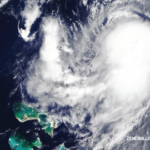Ten years have passed since the U.S. was attacked on September 11, 2001, and six since Hurricane Katrina slammed into the Gulf Coast. While disasters of this magnitude are rare, hundreds of smaller-scale disasters occur every year, including tornadoes, blizzards, fires, earthquakes, airline crashes, and chemical spills.
Whether confined to your building or involving your entire community, any unforeseen event could constitute a disaster for your rheumatology practice, according to Owen J. Dahl, president of Owen Dahl Consulting in The Woodlands, Tex., and author of the eBook The Medical Practice Disaster Planning Workbook (Greenbranch Publishing, 2009). The unexpected force and unusual path of Hurricane Irene was a wake-up call for residents of the Northeast and New England, but consider the impact of a lightning strike that ignites a structural fire, a speeding car that plows into a building, or a shooting that turns a business office into a crime scene.
Although there’s a difference between anticipated disasters, such as hurricanes, and unexpected events, “everyone is at risk,” insists Madelaine Feldman, MD, a rheumatologist and partner with Wilson, Sanders & Feldman in New Orleans who weathered the effects of Katrina.
Two reports, “Guidance for Establishing Crisis Standards of Care for Use in Disaster Situations,” issued by the Institute of Medicine (IOM) in 2009, and “A Management System for Integrating Medical and Health Resources During Large-Scale Emergencies,” prepared by the U.S. Department of Health and Human Services in 2007, highlight the need for healthcare organizations to plan proactively.1,2
Table 1: Flight File
Supplies and equipment inventory
- Itemize inventory and include serial numbers
- Photograph or videotape the office, supplies, and equipment
Insurance policies and business contracts
- Copies and the original of each insurance policy
- Up-to-date listings of insurance companies, policy numbers, and agent phone numbers
- Copies and original of other contracts, including leases, managed care contracts, and service contracts
Documents, licenses, diplomas, and numbers for physicians and staff
- Originals and duplicates of Drug Enforcement Agency licenses, state medical licenses, business licenses, credentialing information (diplomas, medical school, residency, fellowship), board certifications, resumes, and continuing medical education records
- Federal employer numbers, national provider identifier numbers, and provider numbers
- Malpractice insurance face sheet
Patient records and information
- Patient list or patient backup files
- Office forms scanned to digital or hard copies Emergency contact information
- Home and cell phone numbers and contact numbers of out-of-town relatives for all physicians and staff
- Contact numbers for colleagues in the ACR or Coalition of State Rheumatology Organizations
- Cell phone with texting capability, BlackBerry, or satellite phone
- Remote phone site and website
- Contact numbers for the group’s attorneys, accountants, bankers, managed care companies, and insurance agents
Financial
- Names and account numbers of all bank and financial accounts and payroll files
- Tax information, including copies of documents filed with the Internal Revenue Service
Source: Madelaine Feldman, MD, Wilson, Sanders & Feldman, New Orleans.
Reprinted with permission.


